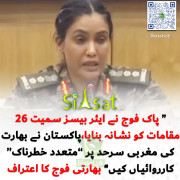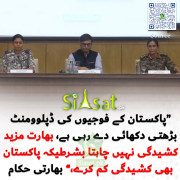Muhammad Raheel Akhter
New Member
China is our great neighbour and a brotherly country, which has stood by Pakistan in difficult times. China-Pakistan friendship is spread over several centuries.
The one billion four hundred million population of China and over twenty million people of Pakistan have to learn each other's language in order to promote long-standing friendship.
The exchanges between the tow countries keep growing with the passage of times. With the prevalence of immense goodwill in the population of the two countries, the people of both countries are greatly found of learning each other's languages. the traders, officials and business people are particularly keen to speak each other's languages.
The writing of this blog is to provide guidance to those people who wish to use basic conversation in Chinese for everyday use. for a structured course in the Chinese language, it is, however, necessary to get admission in a certified institute and learn the language formally through hard work, patience, practice and perseverance.
Speaking Chinese requires a constant practice of pinyin tones by throat and tongue with nasal sounds. Only by repeated practice in favourable environment (preferably with Chinese friends) or with CD Cassettes can enable one to have a reasonable understanding and command of the language. It is difficult but achievable. The fruit of this endeavour would be an awesome capacity to
communicate with one-fourth of the world's population, win their hearts and minds, and conduct business with the world's soon to be largest economy and already the biggest exporter, who is also a trusted friend, neighbour, brother and strategic partner of Pakistan.
The history of the Chinese language is spread over several centuries. The Chinese civilization began along the Yellow River (Huang He). The Chinese language's characters provide a continuity of cultural heritage and unique sense of unity and identity to the Chinese people. The Chinese language which is known as
"Mandarin" is also called Putonghua (Common Speech) Zhongwen (Language of China), Hanyu (language of the Han), Guoyu (National language), Huayu (Chinese language). The Chinese language is both and ancient similating hundreds of words of other languages with suitable modifications in line with the demands of Chinese cultural context.
The standard Chinese language that is Mandarin follows four tones for e.g. Rising, Falling-Rising, Falling and Neutral Tones. Without the use of right kind of tones, it would be rather impossible to understand or to be understand while speaking Mandarin. It is important to remember that the "Pinyin" only provides the closest approximation of the original sounds. To correctly represent the meaning and sound of Chinese expressions, these have to be accompanied by the right tones.
The Chinese language's written script is based on the characters which have evolved from the ancient pictographs/symbols. The modern Chinese characters are the simplified version of the much complicated ancient forms (Guwenz). The Chinese characters are known as (Hanzi).
No body knows for sure, how many hanzi are there. The best estimate is between 15 to 20 thousands. In English language the number of alphabets is 26, in Arabic 32 and in Urdu 36, while in Chinese language there are no alphabets, but characters. A normal university graduate would know between five to eight thousand characters. Knowing five thousand characters would enable one to read a newspaper and any ordinary book. Some characters are words in themselves.
For literary and technical disciplines, knowledge of ten thousnad characters is required. The most scholary people claim to know 15000 to 20000 characters. Chinese written language is same in China and abroad. The spoken Chinese language, as compared to writeen text, is rather easier.
The standadard spoken mandarin follows four tones e.g Rising, Falling-Rising, Falling and Neutral. Different regions in China speak their local dialects (difang yuyan). for instance, the people of Shanghai speaks Shanghai dialect, the people of Canton speak Cantonese. Similarly, other regions have their own dialects.
The Mandarin (Putonghua), is Beijing based northern dialect. It is most commonly understood and used as medium of communication by all Chinese in China and abroad. Every Chinese loves deeply his language.
The one billion four hundred million population of China and over twenty million people of Pakistan have to learn each other's language in order to promote long-standing friendship.
The exchanges between the tow countries keep growing with the passage of times. With the prevalence of immense goodwill in the population of the two countries, the people of both countries are greatly found of learning each other's languages. the traders, officials and business people are particularly keen to speak each other's languages.
The writing of this blog is to provide guidance to those people who wish to use basic conversation in Chinese for everyday use. for a structured course in the Chinese language, it is, however, necessary to get admission in a certified institute and learn the language formally through hard work, patience, practice and perseverance.
Speaking Chinese requires a constant practice of pinyin tones by throat and tongue with nasal sounds. Only by repeated practice in favourable environment (preferably with Chinese friends) or with CD Cassettes can enable one to have a reasonable understanding and command of the language. It is difficult but achievable. The fruit of this endeavour would be an awesome capacity to
communicate with one-fourth of the world's population, win their hearts and minds, and conduct business with the world's soon to be largest economy and already the biggest exporter, who is also a trusted friend, neighbour, brother and strategic partner of Pakistan.
The history of the Chinese language is spread over several centuries. The Chinese civilization began along the Yellow River (Huang He). The Chinese language's characters provide a continuity of cultural heritage and unique sense of unity and identity to the Chinese people. The Chinese language which is known as
"Mandarin" is also called Putonghua (Common Speech) Zhongwen (Language of China), Hanyu (language of the Han), Guoyu (National language), Huayu (Chinese language). The Chinese language is both and ancient similating hundreds of words of other languages with suitable modifications in line with the demands of Chinese cultural context.
The standard Chinese language that is Mandarin follows four tones for e.g. Rising, Falling-Rising, Falling and Neutral Tones. Without the use of right kind of tones, it would be rather impossible to understand or to be understand while speaking Mandarin. It is important to remember that the "Pinyin" only provides the closest approximation of the original sounds. To correctly represent the meaning and sound of Chinese expressions, these have to be accompanied by the right tones.
The Chinese language's written script is based on the characters which have evolved from the ancient pictographs/symbols. The modern Chinese characters are the simplified version of the much complicated ancient forms (Guwenz). The Chinese characters are known as (Hanzi).
No body knows for sure, how many hanzi are there. The best estimate is between 15 to 20 thousands. In English language the number of alphabets is 26, in Arabic 32 and in Urdu 36, while in Chinese language there are no alphabets, but characters. A normal university graduate would know between five to eight thousand characters. Knowing five thousand characters would enable one to read a newspaper and any ordinary book. Some characters are words in themselves.
For literary and technical disciplines, knowledge of ten thousnad characters is required. The most scholary people claim to know 15000 to 20000 characters. Chinese written language is same in China and abroad. The spoken Chinese language, as compared to writeen text, is rather easier.
The standadard spoken mandarin follows four tones e.g Rising, Falling-Rising, Falling and Neutral. Different regions in China speak their local dialects (difang yuyan). for instance, the people of Shanghai speaks Shanghai dialect, the people of Canton speak Cantonese. Similarly, other regions have their own dialects.
The Mandarin (Putonghua), is Beijing based northern dialect. It is most commonly understood and used as medium of communication by all Chinese in China and abroad. Every Chinese loves deeply his language.
Last edited by a moderator:































